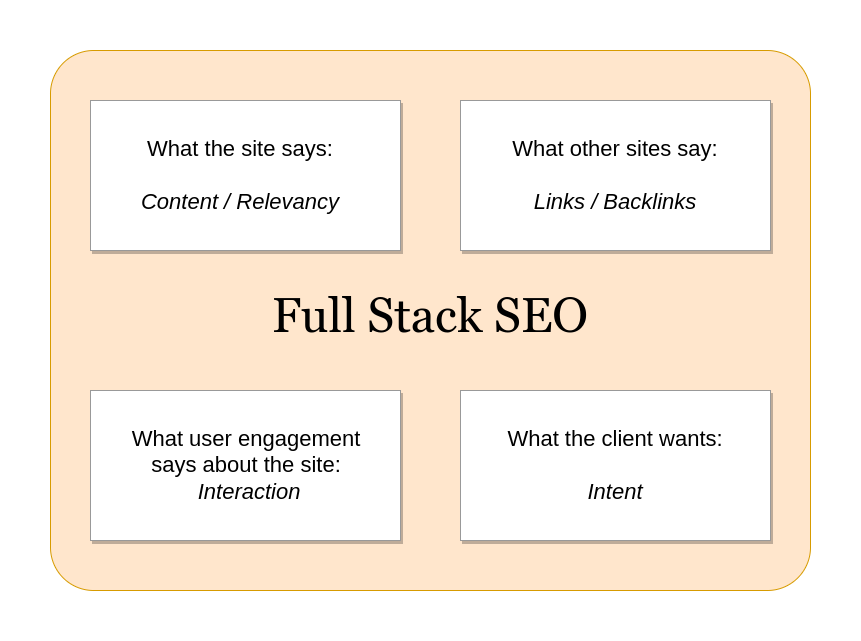by Wayne Smith

Mathematical Point of View of Search Algorithms
Algorithms are mathematical and do not follow wants and desires. Understanding how algorithms work is a great assistance to search engine optimization.
Entity (relationship model)
Search engines have evolved as has SEO. In the past keywords were used and some black hat SEOs stuffed keywords in hidden text to attempt to match the natural density the keyword would have in informational content. Relevancy can now be tested and quantified based on how well they cover the topic, and using entities search intent can be determined by search engines.
Instead of limiting the index to a keyword and page URL pair, natural language processing has produced an alternative where content can be qualified based on how well it covers the topic because it includes information or links to information that have a relationship to the intent of the search.
User Intent or Google Search Intent
There are several intents users may have when using search; Academically these would be considered, Navigational, Informational, Commercial, and Transactional. As Google has local search results, which people use, local intent should be added as real-world user intent, and the academic categories open into many kinds of user intentions, practical considerations, and content offerings (including entertainment).
A legalist POV Google is unable to determine the actual user intent from search; But, what they can and are doing is learning what results people want to find when they search for specific words, (or entities), based on their interactions with the search results, (trying different keywords), and interaction with the site, (not following the link to the site or returning and using a different site).
Personalized Search Et Al
Content Structures for Document Search Systems
Several algorithms aid in getting non-seo content ranked in search engines. For enterprise-level content freshness and gain of knowledge are in play. For video and audio what other people think your content is about is in play; Including user interactions within search and other websites. Internal linking, what you think the content is about is also in play.
SEO Best Practices
Methods and tactics used by industrial leaders. They are well considered for efficiency. Best practices should not be considered the only method. They vary from company to company and industry to industry ... The best practice for an affiliate site is not the best practice for an e-commerce site. SEO is an art form, and different methods are preferred by different people.